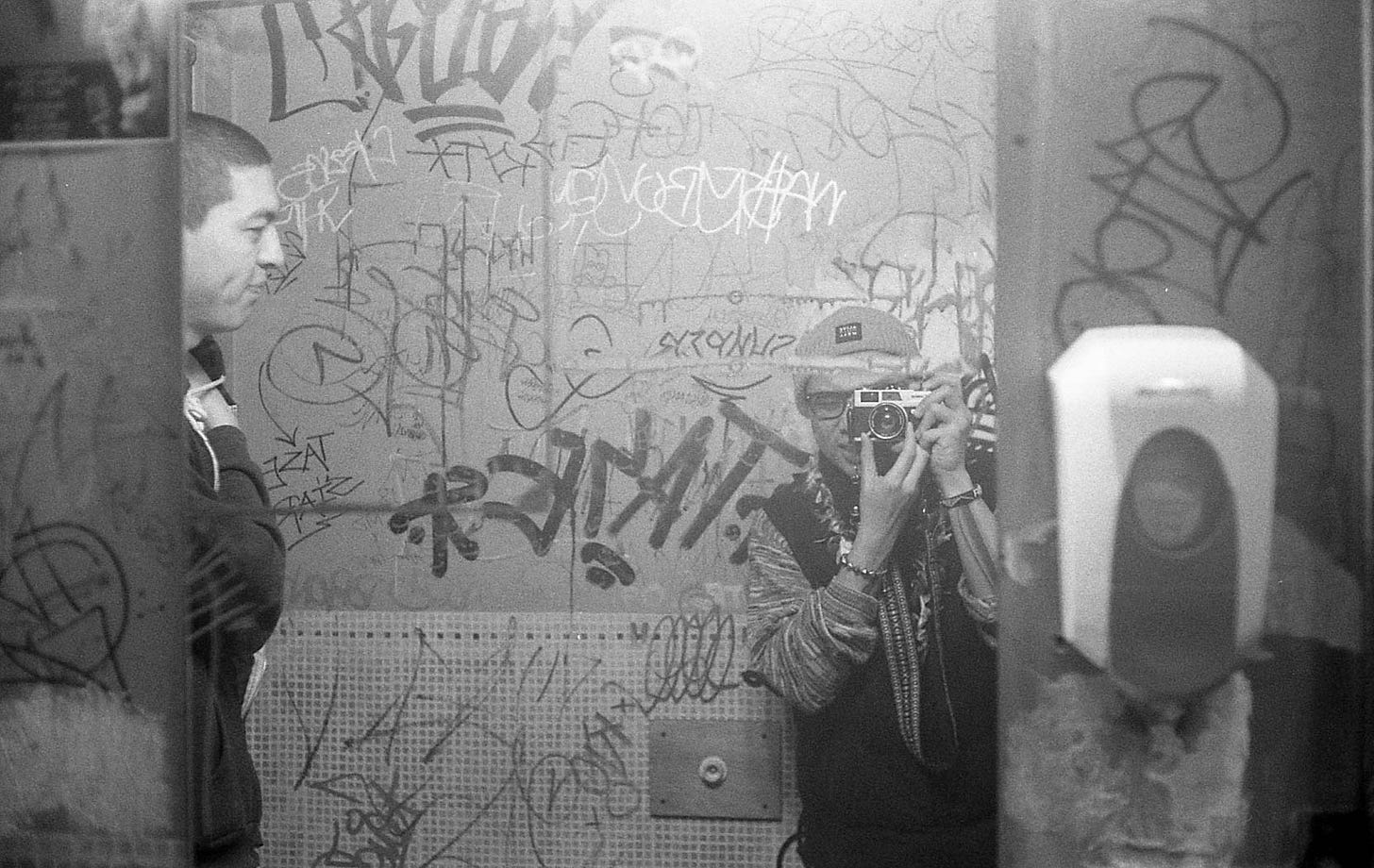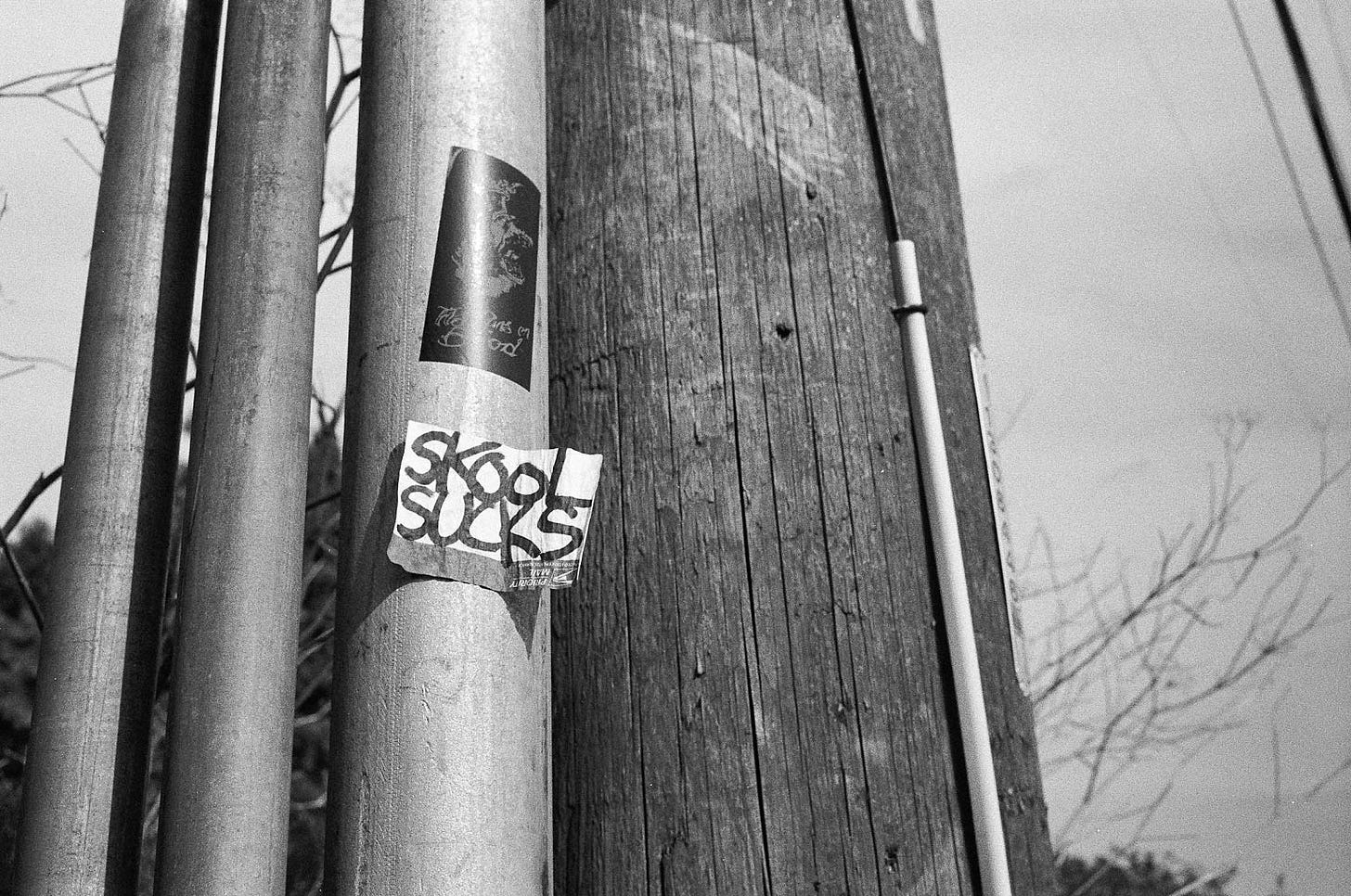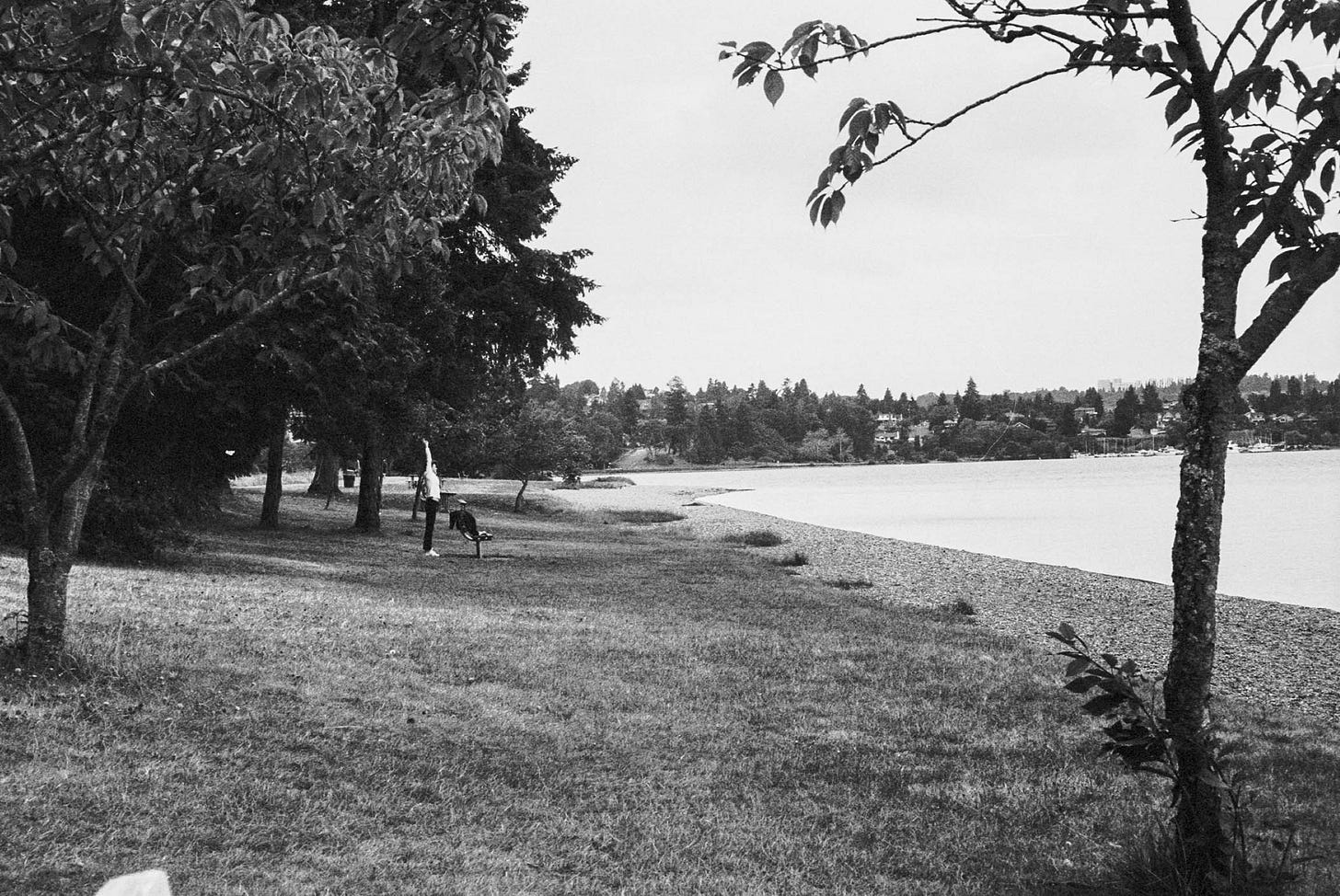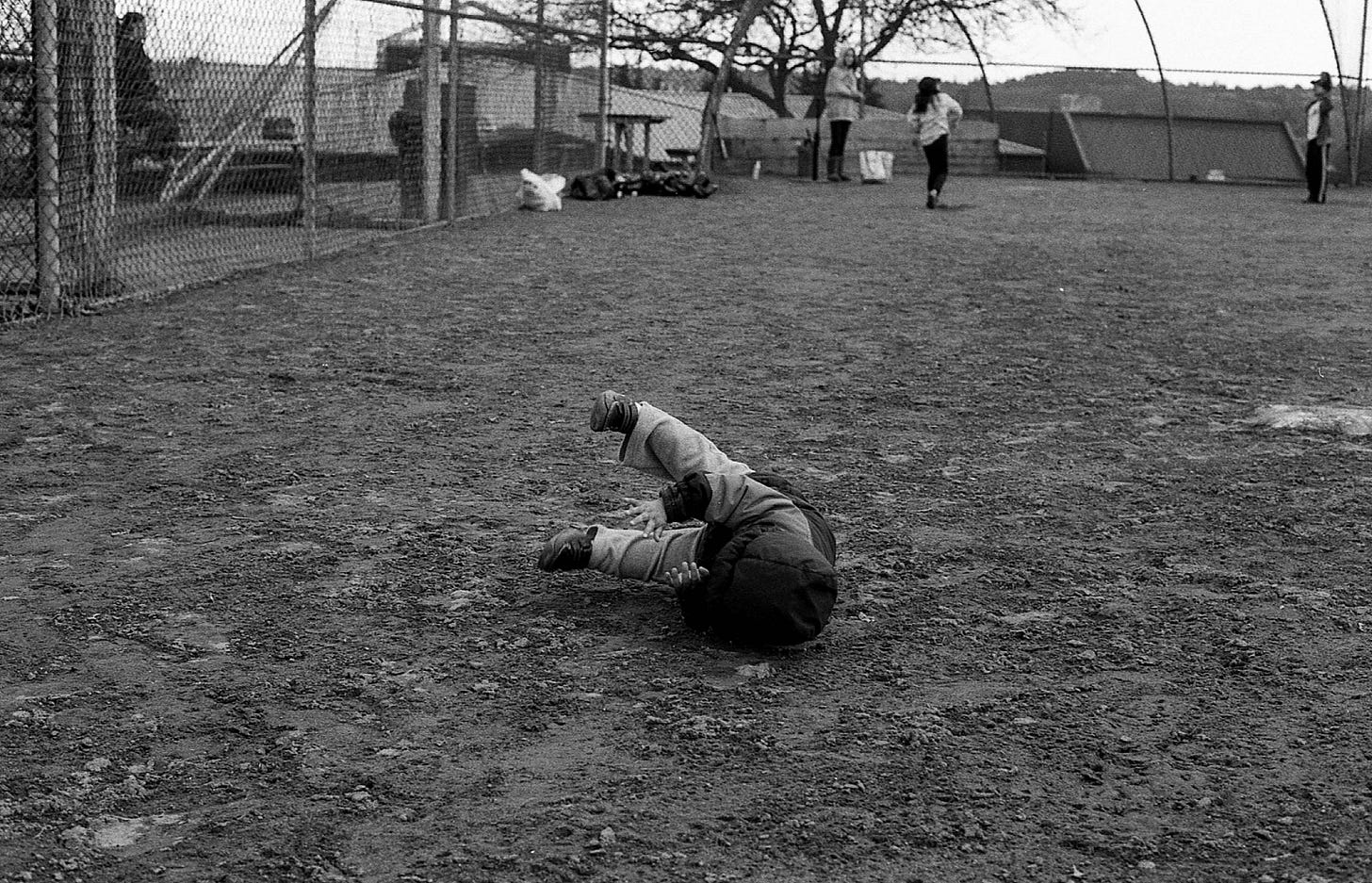Allow Me To Not Introduce Myself, My Name Is
Very Colorful
I’m back again. Or should I say, I’m back again, again. I announce my return to the machine, in long form, in the age of large language models and extreme short-form media.
This is another attempt to re-ignite the photo/essay book project that I started back in 2015. A year after I started, I got maybe halfway through my planned chapters. Progress slowed down as life and business happened, coupled with long bouts of anxiety and depression. I stopped making music, paused all social media, and watched days and nights blur together in the bar and kitchen. I somehow ran a marathon, which helped until it didn’t. Then, The Plague happened.
Finishing this book seemed more distant as time passed and energy dwindled. The time to tell this story seemed to have expired, at least in the way I initially wanted to tell it. Writing paused completely. I kept taking photos for a while longer, but by around 2016 I was down to about one roll of film every few months. Then, every several months. Undeveloped rolls piled up, and the oldest ones may soon start losing the images still waiting to be extracted from them.
Over the last several years, film—like vinyl, retro video games, and other remnants of the analog era—became a Thing again. Young people, as they’re apt to do, salvaged them on their way to the dumpsters. I anticipated, having witnessed photos becoming rather homogenous in style and quality during the early social media era, that the aesthetic particularities of film photography and the novelty of its throwback tech would find new life.
The digital generation, in order to distinguish themselves from one another, endlessly seeks new avenues to shine. Many of those who started with film and never left it have reaped the rewards for sticking it out. Digital camera quality and application-based filters/effects got doper, but still can’t fully capture the analog spirit many of us stay chasing. The ones where new photographs resembled older memories. Images made by machines that are the current machines’ OGs, and therefore weighted with the validation that comes from an elder’s stamp of approval, and the reverence we give to those who work harder than necessary to get the job done.
The film photography industry, after having downsized from the early 2000s to the early 2010s to near-bankruptcy, or dwindling to a niche artist and professional market, was in no position to ramp supply back up to meet the renewed consumer demand, especially as many took up new pandemic lockdown hobbies. My favorite rolls, Kodak Portra 400 and Ilford HP5+, doubled, then tripled in price, if they were even available. Cameras that once piled up in Goodwill, in a junk pile at an estate sale, on eBay, were re-treasured, many becoming collectors’ items. The ecosystem of cheaply available film processing came to an end when Costco finally threw in the towel in 2019, and the few remaining labs had no shortage of customers, as prices and wait times ballooned.
My expensive and time-consuming hobby got more expensive, and time became more scarce. I’ve had a litany of excuses for why this book hasn’t been finished, but none of that matters now. Nearly every artist I know was deeply affected by the Plague, and we’re all still trying to find our footing.
The city changed, We have changed, and I’ve changed. Sometimes I’ve read back what I’ve written, feeling that someone else wrote that shit, and wanting to start all over again. But it’s too late for that. Some chapter drafts have gone out for review, and Professor Rod has successfully talked me out of it.
At first, I thought I was documenting snapshots of a city and scene in the midst of a transformation. I had a starting point, but no end in sight. Most importantly, I didn’t anticipate how much I would be transforming, too. I’ve set 2015, the year I started writing this book, as the book-end to the era I will be writing about, through the lens of someone looking back through the filter of a global pandemic, relationships lost or soured, and the digital and political landscape in the era of peak optimized engagement.
I’ve made peace with what I have written so far, some of which I hope to start sharing here as I promised before. Some parts will be changed altogether. Whatever complex relationship I have with my previous body of work, I’m here to lay bare. Threads that I previously compartmentalized with distance from this project—fatherhood, relationships, mental health, political organizing, technology—have inextricably been woven into this narrative, the inescapable context for how and why I got here.
Truth is, I was down bad and didn’t want anyone, myself included, to know how bad. Like many others, vulnerability was not modeled for me as a young person. Time began passing more quickly than I could grasp, and the line between comfort and discomfort blurred. I finally asked for help, and doors have reopened, slightly. The fuel that had been missing, which I didn’t acknowledge to myself until recently, was getting back to making music. The fire never left, but the muscles that did the creative lifting for many years had atrophied and those first workouts back were brutal.
Since I’ve been back in the studio over the last 3-4 months, paths have illuminated for stories I’ve yet to tell. The laughter is back, sometimes uncomfortably, but better than no laughter at all. Some stories will come in song form in upcoming Beatrock Music releases as solo projects, or in long form here. In time, there will be new photos. I’ve recently unboxed old cameras and am feeling more inspired, learning how to reconnect and disconnect at the right times, in the right places. For those in/around Seattle, I’ll be co-headlining a show at The Clock-out Lounge on Beacon Hill on June 30th to celebrate the release of my new EP, Taglagas.
I’ve given myself a hard deadline of the end of Summer 2023 to finish the first draft of this book. This new Notes feature here on Substack feels like a reasonable facsimile of a social media feed I once found joy in long ago and I’ll suppose I’ll give it a go. Feedback on my writing will be gladly accepted. Also, I figured, with AI ramping up its narrative skills and human language-emulating ability that it’s now or never. Either I tell these stories or some bot is gonna start making them up for me.







